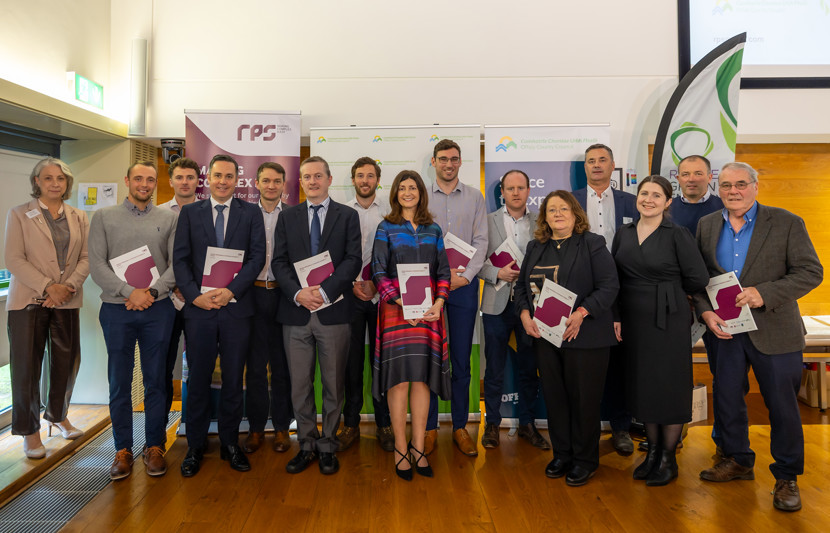

Sustainability
Energy transition
Rhode Renewable Hydrogen Feasibility Study
Our feasibility study has identified and costed a clear proposal for one of Ireland’s first green hydrogen production and end use demonstrator projects. The site at Rhode Green Energy Park, County Offaly, is strategically located with a rich energy production history and a convergence of electricity grid, renewables and gas infrastructure.
The demonstrator will inform how energy systems can be integrated and decarbonised through the generation and deployment of renewable hydrogen using curtailed wind energy.
The project is of national importance given its alignment with Ireland’s recently published National Hydrogen Strategy and its aim to focus Ireland’s efforts on the scale up and production of renewable ‘green’ hydrogen, as it supports both our decarbonisation needs and energy security needs.
It also aligned with Ireland’s Just Transition objectives, putting the Midlands region at the centre of sustainable energy production, supporting communities in their transition to a low carbon economy and generating sustainable employment in green enterprise across the region.
Key details
Project name:
Rhode Renewable Hydrogen Feasibility Study
Client:
North Offaly Development Fund (NODF)
Location:
Co. Offaly, Ireland
Services provided:
- Study lead
- Technical co-ordination
- Feasibility study report writing
- Policy review
- End use analysis
- Financial and funding models
- Demonstrator project definition
- Project management
Challenge
In 2020, we were appointed by Offaly County Council to carry out an Opportunity Assessment Report for developing ‘Rhode Green Energy Park’ (RGEP). The report highlighted the potential for the phased development of an energy innovation hub at Rhode including hydrogen.
As a result, the Feasibility Study project was commissioned by North Offaly Development Fund Ltd. and Offaly County Council, with co-funding by SSE Renewables, Bord na Móna, and the Gas Networks Ireland Gas Innovation Fund.
We co-ordinated inputs from the University of Galway and University College Dublin who carried out modelling of the hydrogen production scenarios for different sized electrolysers and modelling to optimise the gas network injection for different hydrogen percentages.

Objectives
The objectives of the project were to:
- Demonstrate energy system integration, linking the Irish electricity grid and gas network, quantifying the decarbonisation benefits, identifying challenges and funding requirements.
- Provide a clear Roadmap for delivery of the demonstrator project, with clear implications, costs and benefits.
- Advance decarbonisation for Irish gas grid, linking the energy transition with the Just Transition.
- Explore other ‘Hydrogen to X’ end use applications.
We were appointed to deliver:
- Optimal technology type and scale for the electrolyser, and relationship to renewables (wind, solar, biomass, battery) and grid.
- Optimum means for bringing the hydrogen to gas consumers via nearby AGI’s.
- Opportunities for use of hydrogen and oxygen locally.
- Carbon emissions reduction.
- Cost benefit of the preferred configuration.
- Funding opportunities, and regulatory/policy gaps.
- Dissemination of findings.
Solution
Our commission on the project is a significant contribution to the development of sustainable green hydrogen production and use in Ireland. The study explores the feasibility of a demonstrator-scale electrolyser focused on harnessing constrained wind power which is otherwise wasted (potentially the first in Ireland).
The project would therefore be a means of sustainably capturing this energy and using it to displace conventional carbon-based fuels. Hydrogen produced by the electrolyser would meet the EU classification for renewable hydrogen.
The Strategy notes hydrogen’s important contribution to:
- Decarbonising our economy, providing a solution to hard-to-decarbonise sectors where electrification is not feasible, or cost-effective.
- Enhancing our energy security, through the development of an indigenous zero carbon renewable fuel which can act as an alternative to the 77% of our energy system which today relies on fossil fuel imports.
- Developing industrial opportunities, through the potential development of export markets for renewable hydrogen and other areas such as Sustainable Aviation Fuels.
This project considered the production, end uses, transportation and storage of green hydrogen. End uses considered included transportation fuel displacement, gas network injection, district heating, hydrogen blending at gas fired power stations, electricity grid balancing and local energy provision.
The envisaged 1MW electrolyser demonstrator project would provide an estimated annual CO2 emissions reduction of 1,173 tonnes, making a significant contribution to decarbonising the gas network in Tullamore and Clara combined with an achievable transportation end use. Considering all of these aspects the project has a local, regional and national importance.


